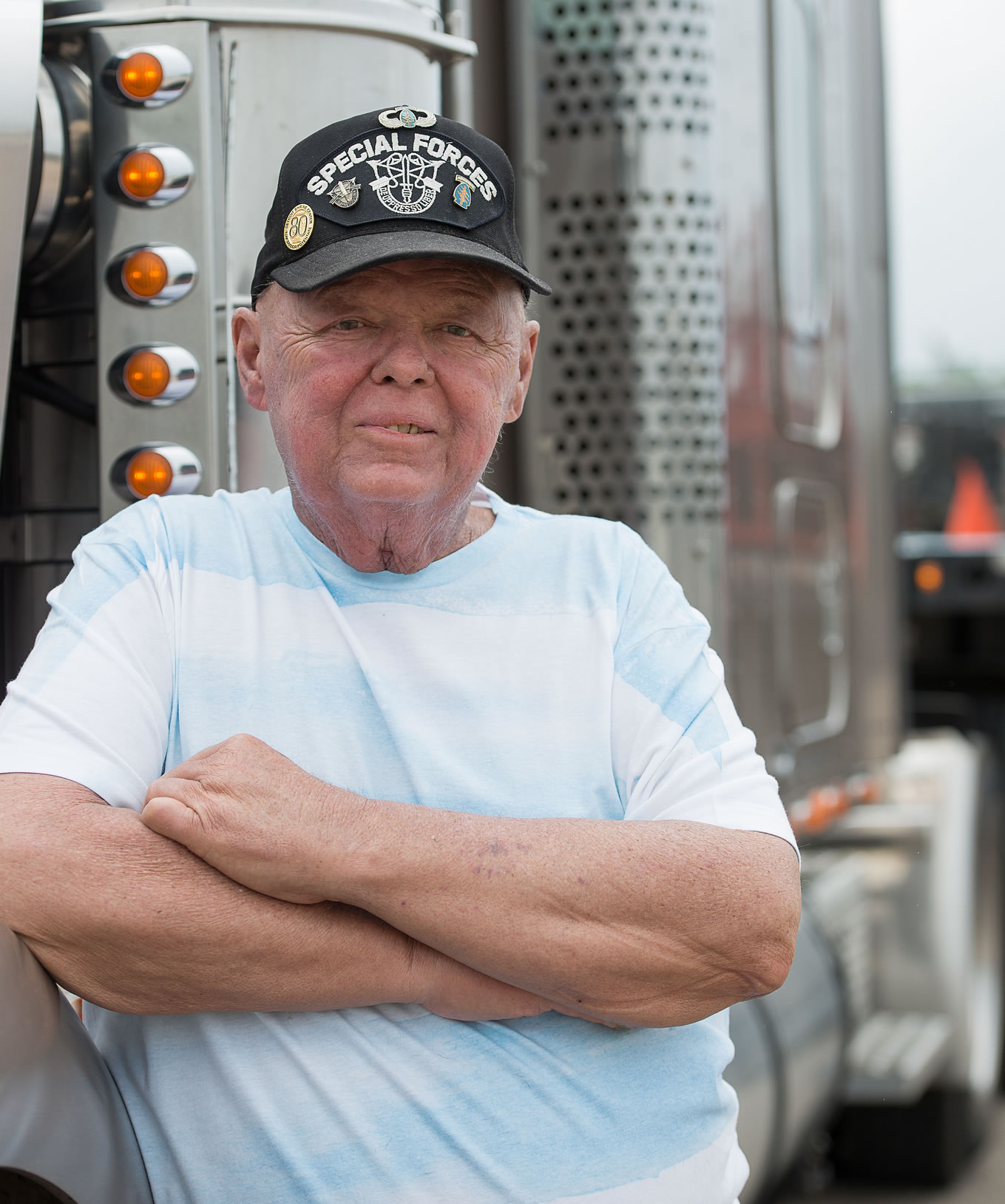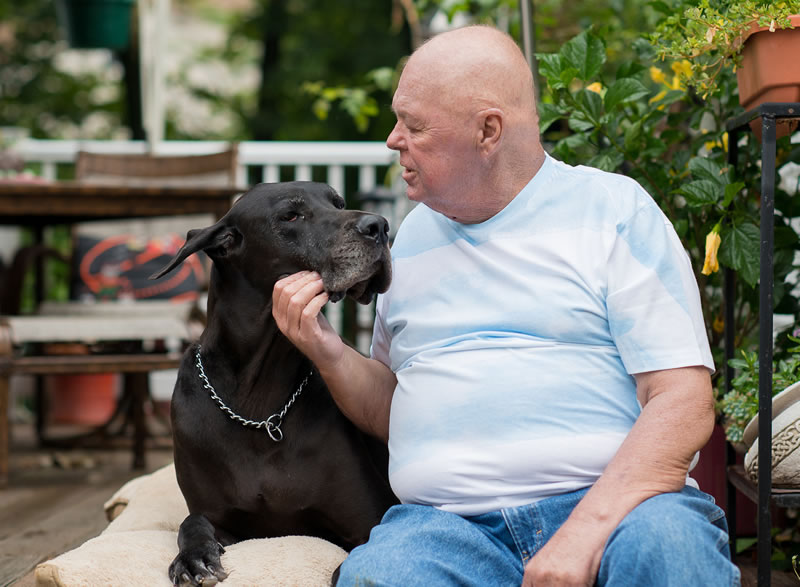Help In Healing

Photo by Edda Pacifico
Visit the Symptom Management and Supportive Care Program web page to learn more.
Wound care service gives patients hope and wound management
A leukemia diagnosis last spring took Ralph May, 64, by surprise. In a matter of weeks, he’d gone from hauling automotive machinery and equipment in his Kenworth rig to receiving chemotherapy in Clarkston, Mich. During his three-week stay at the U-M Rogel Cancer Center for a bone marrow transplant, he developed a sacral wound that wouldn’t heal and persisted into the summer.
Wounds are a common side effect of cancer and cancer treatments, says Nurse Practitioner Suzette Walker, co-director of the Rogel Cancer Center's Symptom Management and Supportive Care Clinic. Chemotherapy or oral drugs can cause skin toxicities like rashes and dry skin that can be uncomfortable and bothersome to patients. Certain cancers develop tumors underneath the skin that can break down, leak and cause unpleasant odor and infection.
Or, as was May's case, during hospitalization, pressure wounds can develop from unrelieved pressure that damages the skin and underlying tissue.
"When the wound wasn't healing I was just having terrible pains," May says. "I have an upbeat attitude and laughed and giggled about its location, but it was hurting. When I was sitting and lying, I had to be just right to keep it from aggravating me."
Pain relief is just one reason it is important to care for open wounds, says Dawna Allore, R.N., who manages the clinic's new wound care program. Healing a wound takes energy away from a patient’s ability to tolerate chemotherapy and other cancer treatments.
In addition, wounds have a significant social impact. Not only does a wound cause physical discomfort, it is in many cases right there for everyone to see. Patients often isolate themselves because they’re worried about their physical appearance or because a wound has an unpleasant odor.

Photo by Edda Pacifico
"Some wounds we can heal, so this is the focus," Allore says. "Other wounds, such as those caused by a tumor, are ongoing so we are teaching patients how to live with it. There are many things people can do to create a new normal in which living with a wound is much more tolerable."
May experienced a significant reduction in pain after his first visit to the wound care clinic when Allore introduced a new antibacterial bandage with a heart-shaped bandage to wear over it.
"People sometimes think changing a dressing several times a day is best," Allore says. "You actually lose healing time when you change a dressing because the temperature of the wound bed changes. Each time you change it, you can lose up to four hours of healing time."
May has also tried a variety of creams to help with pain.
Another important part of wound care is nutrition. May sees Registered Dietitian Danielle Karsies each time he visits the clinic; they discuss the kinds of foods that promote healing.
"Both protein and fluids are essential to wound healing. Protein is the main building block for tissue growth and cell renewal, and fluids promote blood flow to the area," Karsies says. "Mr. May was already doing a multivitamin, which was good, but we also tried supplemental vitamin C and zinc because his wound got stagnant. His fluids were very low so we're working on that to get the blood flow going to the wound."
Keeping blood sugars under control is also important to healing wounds. Diabetic patients are encouraged to adhere to a diet low in sugar, fat and salt, eat small portions throughout the day and focus on complex carbohydrates.
"Some of our patients are healed from their cancer," Karsies says. "We're helping them live with day-to-day problems from treatment including long-term symptoms that are bothersome and a hindrance to daily life."
After finding a perfect bone marrow donor with 10 matching protein markers, three weeks in the hospital for transplant, an additional week in the hospital for treatment for a fever and 100 days of recovery, May’s biopsy showed no cancer.
He hopes to return to his rig soon and relieve his 27-year-old son of the driving duties.
"I am cancer-free as of right now. My doctor says I'm living on my donor cells," May says. "Thanks to the care I've received, I'm now healing and in minimal pain. It is working."
Tips for wound care
- Wash hands before and after changing bandages.
- Never re-use bandages.
- Keep the wound clean.
- Dress wounds as instructed by your doctor or nurse.
- If bleeding, clean the wound and apply pressure with a cool cloth or ice pack.
- Avoid scratching, rubbing or picking.
- Eat high-protein foods, take a multivitamin with minerals and drink at least 64 ounces of fluid daily. Call a doctor if you develop a fever of 100.5° F or higher, or when the wound:
- bleeds for more than 15 minutes
- is red around edges, hot or swollen
- is more painful than usual
- develops an unpleasant odor
- oozes yellow or green liquid
Source: American Cancer Society
More resources for wound care
American Cancer Society's tips for caring for wounds at home
Read the Fall, 2012 issue of Thrive.
